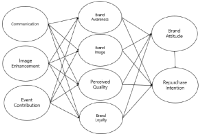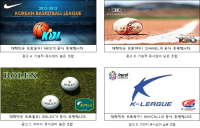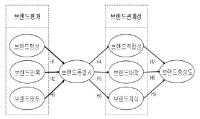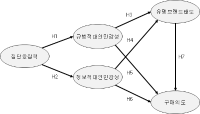
Purpose The purpose of this study was to provide title sponsorship marketing strategies by defining the relationship between professional volleyball title sponsorship, brand equity, brand attitude, and repurchase intention. Methods This study distributed 390 questionnaires to 2018-2019 V-League audiences and a total of 313 questionnaires were used as final validity sample. For data analysis, SPSS 21.0 and Amos 18.0 were used for frequency analysis, reliability analysis, confirmatory factor analysis, and structural equation analysis. Results First, title sponsorship had significant influence on brand equity, therefore hypothesis 1~3 were accepted, except for 1-3(perceived quality) and 1-4(brand loyalty). Second, among brand equity subfactors, hypothesis 4-1(brand awareness) and 4-4(brand loyalty) had significant influence on brand attitude which made hypothesis 4 partially accepted . Third, among brand equity subfactors, only brand image(hypothesis 5-2) had significant influence on repurchase intention which made hypothesis 5 partially accepted. Lastly, brand attitude had significant influence on repurchase intension, which made hypothesis 6 accepted. Conclusions It is anticipated that based on the result of the study, effective marketing strategy can be developed for title sponsorship companies in the future.


The purpose of this study was to examine the effects of congruence type between sporting event and corporate sponsor as well as the effects of advertisement exposure frequencies (1, 3 or 5 times) on advertisement attitude and advertisement effectiveness, including brand attitude and advertisement wear-in and wear-out effects. Data (N=150) were collected using a convenience sampling method and 3-group random assignment. The collected data were analyzed by means of frequency analysis, reliability analysis based on factor rho coefficient, correlation analysis, one-way ANOVA, confirmatory factor analysis, and latent mean analysis. The results were as follows; firstly, in case of higher functional congruence condition, advertisement attitude was most positive in a 3-time exposure situation and it decreased as advertisement exposure frequency further increased. However, in the lower functional congruence situation, advertisement attitude was continuously decreased as advertisement exposure frequencies increased. Secondly, in the higher image similarity situation, advertisement attitude was increased as advertisement exposure frequencies increased. On the other hand, in the lower image congruence situation, advertisement attitude was decreased as advertisement exposure frequencies increased. Lastly, advertisement attitude, brand attitude, and wear-in effects were statistically higher in the high functional and image congruence situations than did in the low functional and image congruence situations.



This study is aimed at identifying the relationship among brand evaluation, brand identification, brand relationship, and brand loyalty towards professional baseball title sponsors in an empirical manner. The target of this study is 'Korea Yakult,' a baseball title sponsor in 2014. A survey was conducted on 377 home crowd members of Nexen, Doosan, LG and SK based in metropolitan regions. Sampling method was Convenience Sampling Mode, and questionnaire has been structured to be self-administerd type. SPSSWIN Ver. 21.0 and AMOS 18.0 have been used for data processing. The findings are as follows. First, the brand reputation had a significant impact on brand identification. Second, the brand satisfaction had no significant impact on brand identification. Third, the brand attitude had a significant impact on brand identification. Fourth, the brand identification had a significant impact on brand suitability. Fifth, the brand identification had a significant impact on brand attachment. Sixth, the brand identification had a significant impact on brand knowledge. Seventh, the brand suitability had a significant impact on brand loyalty. Eighth, the brand attachment had a significant impact on brand loyalty. Ninth, the brand knowledge had a significant impact on brand loyalty.


The objective of the current study is to empirically reveal the impact of self-recognized group cohesiveness and interpersonal susceptibility (normative interpersonal susceptibility and informative interpersonal susceptibility) on mountain bikers’ attitude toward name brand and purchase intents using structural equation model. In order to achieve this goal, the researchers surveyed 217 mountain bikers in six mountain bikers’ clubs in Chungcheong-do province area in South Korea. In order to validate the proposed structural model, SPSSWIN version 21.0 and AMOS 18.0 were utilized. The results showed that first, group cohesiveness had a positive influence on the bikers’ normative and informative interpersonal susceptibility. Second, normative and informative interpersonal susceptibility positively influenced attitude toward name brand. Third, normative interpersonal susceptibility did not positively influence the purchase intent, but informative interpersonal susceptibility did. Fourth, attitude toward name brand positively influenced the purchase intent.

PURPOSE This study aimed to identify the dimensions of sport brand authenticity and to develop a valid and reliable scale for measuring such dimensions. METHODS Along with a sequential mixed method design, qualitative researches were conducted (a literature review on brand authenticity and the inherent value of sport, 5 one-to-one expert interviews, and a Delphi survey of 10 researchers). Based on the qualitative research results, an EFA (n=304), 2 times CFA (1st: n=304, 2nd: n=311), and correlation analysis using the other scale (brand relationship quality, brand attachment, brand credibility) were conducted to test reliability, construct validity, and criterion-related validity. RESULTS In the qualitative research results, 8 dimensions with 36 items were extracted; however 6 dimensions (originality, connectedness, legitimacy, authority, sport spirit, and expertise) with 28 items were identified as appropriate structures from EFA and CFA, and the relations between all the dimensions and other scales related to consumer attitude were statistically significant in the correlation analysis. CONCLUSIONS The findings suggest that the scale in this study could provide a new and specific perspective on sport brand authenticity, which is constructed using a general aspect and a sport specific aspect, and an understanding of the concept of sport brand authenticity in other sport industries.
PURPOSE This study first investigated how different types of sport team logos (emblem vs. mascot) influence consumer behavior through warmth and competence and then examined the moderating effects of consumer characteristics (gender) and contextual cues (perceived competence) on these relationships. METHODS A nationwide sample of adults age 20 was selected using quota random sampling based on gender. A 2 (logo type: emblem vs. mascot) × 2 (gender) × 2 (contextual cue: high competence vs. low competence) experimental design was employed, with participants randomly assigned to each group. Confirmatory factor analysis (CFA) with Mplus 8 was employed to assess the measurement model’s reliability and validity, and hypothesis testing was conducted through structural equation modeling (SEM), measurement invariance tests, and multigroup SEM analysis. RESULTS Findings indicate that anthropomorphized mascot logos, compared to emblem logos, generate more positive attitudes and psychological responses (warmth and competence) to the team. Gender’s moderating effect on the relationship between logo type and consumer perceptions (warmth and competence) was not significant, but contextual cues’ moderating effect was partially significant. CONCLUSIONS This study highlights of perceived warmth and competence’s crucial role in shaping consumer attitudes toward sports teams through logo design. These findings offer meaningful insights for sports teams and marketers to optimize branding strategies and enhance fan engagement.